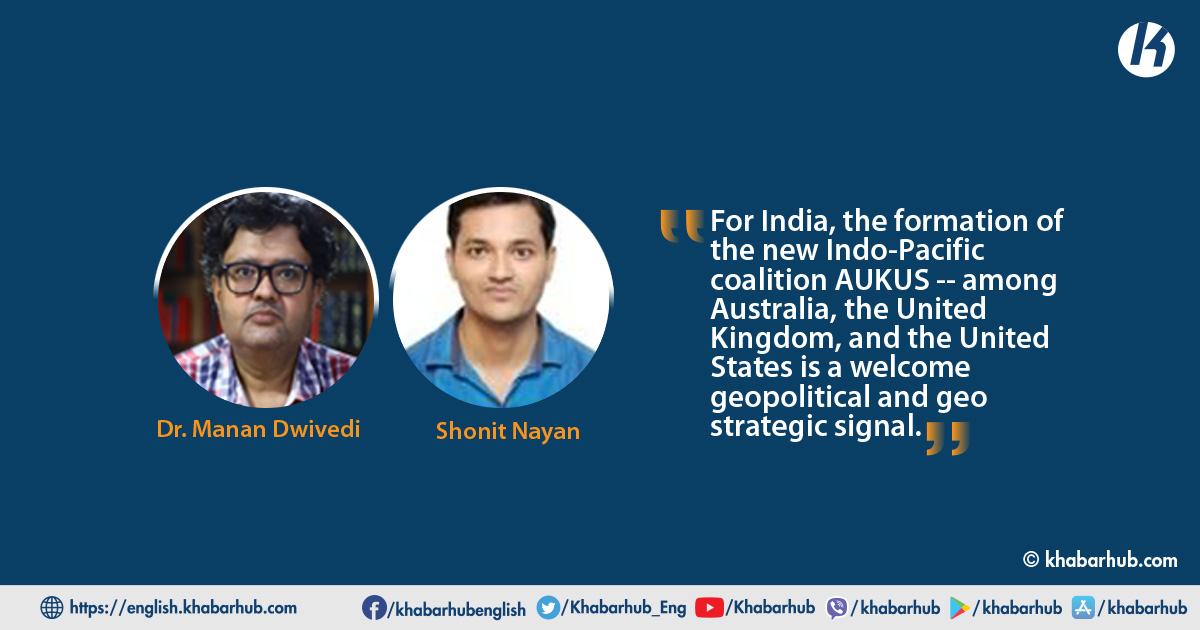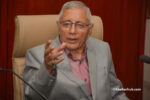With great power comes great responsibility. This age-old axiom and maxim is a pertinent poser before the American defense and strategic dispensation in post-Taliban Afghanistan.
Americans call their humanitarian and Demos zeal in Afghanistan as part of their Supercop and regulator stature pervade with yeomanly and philanthropic vigor.
Undeniably, there is a lot of value-laden foreign policy analysis premised upon what transpires in the larger Global polity and the regional dynamics of South Asia.
One can also cite, as an attendant strategic constraint, America’s, Responsibility to Protect (R2P) responsibility as serving as a typical rationale for the long war, as the American presence in Afghanistan in the post 9/11 context is concerned.
President Joe Biden has arranged for the American withdrawal from the twilight zone’s battle stations but it’s not his personal decision.
One can zero in upon the Indian context in the larger South Asian context. The larger trajectory of the India-United States partnership happens to be the order of the day as it has crossed and subverted myriad challenges and obfuscation of the geo-political, geo-economics, and strategic order and genre.
The consonance of the American community colleges and Universities along with the contributions of the Indian Diaspora in the grand American dream is also some of the key adhesives of the larger bilateral relationship between India and the United States of America.
The day the Indian ship was cordoned and off and asked to return in the early days of the 20th century, the wrong and discordant note had been struck between the East Coast and Bharat.
But, there happens to be a plethora of evidence, which ekes out the positives in the India-US relations. It was President Roosevelt (1993-45) in the United States who requested and suggested to Prime Minister Winston Churchill (1940-45) of Great Britain seeking his wish to quickly grant freedom and independence to India.
Thus, the American iron glove also had its special velvet glove for India at times which is a lesser-known narrative often ignored by India and is something which sympathetic of the American ties and perspective towards India.
Apart from the World War II-era (1939-45), the larger tract of Prime Minister Nehru seeking the American help in the advent of the Chinese threat and invasion of India in 1962, the American President Kennedy(1961-63), JFK, was ready to supply India with a squadron of Starfighters and equipping the Indian Urbania with the anti-aircraft firepower in the event of an imminent Chinese raid on the prominent Indian metropoles during the India-China war of 1962.
Thus, the Indian casket was never completely rejected by Washington and Capitol Hill. As an attendant fact who can forget the beneficence of the Green Revolution when the US aided India with agricultural and technical know-how to usher in an era where-in, India could become self-sufficient in the realm of food production and the larger rubric of food security.
The dark cloud of the Cold War (1946-91) incited the Americans not to cooperate with New Delhi as India was ensconced in the post-independence advent of anti-colonialism and anti-imperialism and New Delhi had rejected the American offer of making New Delhi a full-fledged member of NATO, SEATO and CENTO, which were certain opportunities which were adroitly and pertly grabbed by Pakistan.
Thus, the US soon accepted Pakistan as an ally and due to which Islamabad attained the status of a Frontline State culminating in the New Great Game in Afghanistan in the nineties, in the post-Taliban resurgence in Kabul, now, in the contemporary context.
Thus, the Indian US tango was initiated on a negative note but with the advent of President George Bush (2001-09) and President Donald Trump (2017-21), the diplomatic and strategic environment changed within a few years as India signed the much-vaunted and commented upon India US Civil Nuclear Cooperation deal which gave India the all significant waivers to become part of the Hyde Act despite India being a nuclear power since 1974 and 1999, through the Pokharan explosions.
The other antecedents in the larger pragmatic partnership which can be cited happen to be of the order of the US negating the supply to the Tarapur nuclear reactor and the intransigence of an IUS lobby to browbeat New Delhi with the Non-proliferation dragnet all across the passage of the NPT and CTBT.
Now, in the contemporary context, the delineation of the India US partnership has been greatly metamorphosed with the advent of a nationalist dispensation in New Delhi and former President Donald Trump’s ascension in the stodgy White House.
The United States in the aftermath of India and Washington becoming near to allies, referred to New Delhi to take up a larger and wider nature of a global role as a leader while no longer being a balancer and moralist nation pontificating about the theme of values and ethics in the larger international system.
Though actually India never pontificated and it was only adhering to the reactive and idealist segment of the post-independence foreign policy of the nation in the fifties and sixties.
The signing up of Washington and New Delhi as the all-weather allies through the advent of the strategic partnership from 2005 onwards and the Diaspora’s importance of the amplifying genre in the context of the bilateral partnership has added the much-needed shimmer and jest to the bilateral relationship between India and United States of America.
In this reciprocated voyage of the oldest and the largest liberal democracies, revolving around focus on shared democratic and human rights values and having locus across increased bilateral, regional and global trajectories, both nations have reached up to such heights from where these two responsible global powers can propel their dream for a more prosperous world and balanced global order.
The consonance of the American community colleges and Universities along with the contributions of the Indian Diaspora in the grand American dream is also some of the key adhesives of the larger bilateral relationship between India and the United States of America.
The visa Regime for the Indian students and immigrants along with the differing interpretations of the Intellectual Property Rights (IPR) are still some of the flies in the ointments in the larger rubric of the relationship between both the liberal Democracies.
As a summation, the idiom of a cherished value consonance betwixt both the liberal Democracies happens to be the order of the day and with the return of President Trump as a doughty but unpredictable chaperon of the sole superpower in the international ecosystem, the similarities and the congruence of interests and policies have been the most well-delineated between both the nations.
The recent blitz of intelligence and communication treaties of the order of BECA and CISMOA have furthered lent strength and depth to the India US relationship though the million-dollar relationship remains that whether former President Donald Trump or the present American peace pontiff, Joe Biden is more pro India and enamored of the Indian interests and identity questions in the international firmament.
In this reciprocated voyage of the oldest and the largest liberal democracies, revolving around focus on shared democratic and human rights values and having locus across increased bilateral, regional and global trajectories, both nations have reached up to such heights from where these two responsible global powers can propel their dream for a more prosperous world and balanced global order.
With the most recently concluded India USA Bilateral 2+2 Inter-Sessional meeting on 1st September 2021 in Washington DC, in which both the sides took stock of the progress and developments in the bilateral agenda under the India-US strategic conglomerate, including defense, global public health, economic and commercial cooperation, science and technology, clean energy, maritime security, terrorism, human rights and climate finance and people to people (P2P) ties, followed by healthier exchange assessments about recent developments in South Asia, the Indo-Pacific region and Western Indian Ocean, given their shared vision for peace, stability and prosperity and for a free, open and inclusive Indo-Pacific.
This has further attained a new height on September 24, when US President Joseph R. Biden hosted Prime Minister Narendra Modi of India, Prime Minister Scott Morrison of Australia, and Prime Minister Yoshihide Suga of Japan at the White House for the maiden in-person Leaders Summit of the Quad.
The Quad leaders have put forth ambitious initiatives or agendas to deepen their ties in line with de facto challenges of the 21st Century like- addressing Covid-19 and Global Health with a focus upon vaccination, saving lives and building robust health security framework, resolving infrastructural deficits through Quad Infrastructure Coordination Group, emphasis upon high-standards infrastructure, addressing climatic concerns through the formulation of Green-Shipping Network, Clean Hydrogen Partnership and accelerating climate adaptation, resilience and preparedness and addressing challenges across technology, cyber security and space through publishing Quad SoP, establishing Technical Standard Contact Groups, supporting 5G deployment, launching Quad Senior Cyber Group, sharing of satellite data for protecting earth and water and capacity enhancement on SDGs.
Further for India, the formation of the new Indo-Pacific coalition AUKUS—among Australia, the United Kingdom, and the United States is a welcome geopolitical and geo strategic signal, and a strong political resolve in Washington DC to confront the growing security confronts from Beijing and so-called end of long-standing taboo on transferring military nuclear propulsion technology even to its allies followed by buying more time for New Delhi to strengthen and catalyze its maritime security, playing an important role in devising integrated ASEAN-Quad prospect in Indo-Pacific and last but not the least to increase its potential economic outreach keeping the global trend of trillion dollars of investments are at stake in high seas.
(Dr. Manan Dwivedi is a Faculty, International Relations & International Organization at the Indian Institute of Public Administration (IIPA), New Delhi; and Shonit Nayan is a Doctoral Candidate at the Department of Public Administration and Policy Studies, Central University of Kerala & was a former Research Assistant at IIPA)









Comment